Empire of Dirt draws its form, content and context directly from a soil sample taken from the site of RMIT’s New Academic Street. Under a microscope the sample revealed the ecology dynamics and the complex symbiosis of microorganisms in their process of dealing with introduced anomalies. Shaping the conversation between existing soil and the introduced elements such as micro-plastics, pollutants and metals informed the shape, dynamic and symbolism of this public sculpture.
Empire of Dirt is a sculpture that engages the public’s imagination of what is already present in the site, in the darkness and complexity of the living earth beneath our feet, and proposes how the biology may adapt to survive the current ecological tipping point of the Earth. It creates a narrative of how future microbiological insects in the RMIT zone have evolved and transformed the soil fabric into giant complex living structures, similar to the great termite mounds of the Northern Territory. The soil fabric is imagined to be a hybrid of contemporary building materials, plastics, metals, polycarbonates, bioluminescent glass and other reformed earth materials.
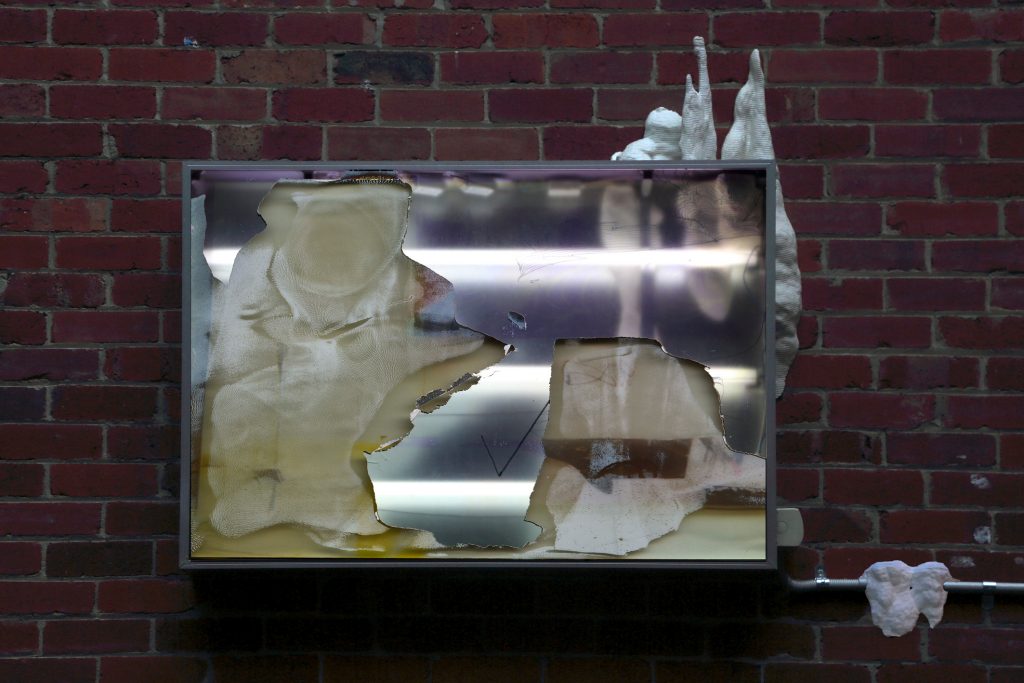
Empire of Dirt is a sculpture form that started with a 3D scan of a living giant termite mound. This data mesh is reconfigured into a series of topographical layers, illuminating the connection between the material structure and the landscape.
The sculpture is specifically aligned, and in dialogue with, six pre-established light-boxes, showcased by Lightscape Projects RMIT. These light-boxes include a combination of images from the site and lab based microbiological imagery, site research and drawings from the layered research process of Empire of Dirt.
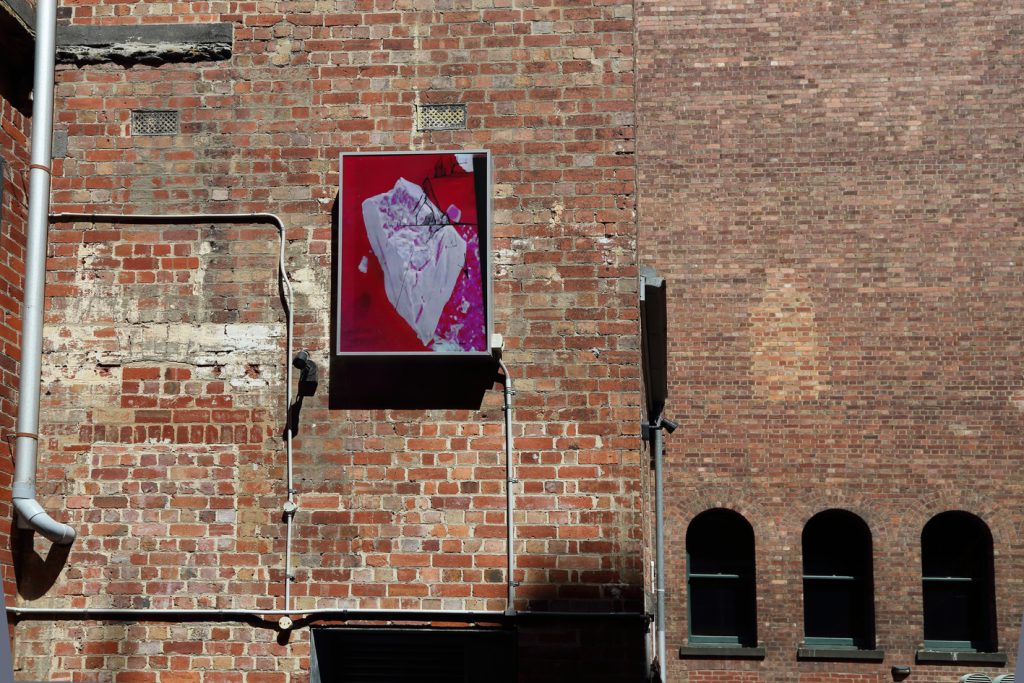
Empire of Dirt is a site-responsive research project created in collaboration with Dist. Prof Andy Ball: Centre for Environment, Sustainability and Remediation and Dr Fiona Scholes Industrial Innovation Program CSIRO.
Funded by Wonderment Walk Victoria and produced in collaboration with RMIT’s Centre for Art Society & Transformation and Carbon Arts, Empire of the Dirt has been realised through the Urban Animators: Living Laboratory program near the New Academic Street development site. The temporary artwork is installed in Rodda Lane, just off La Trobe Street, at the university’s city campus.
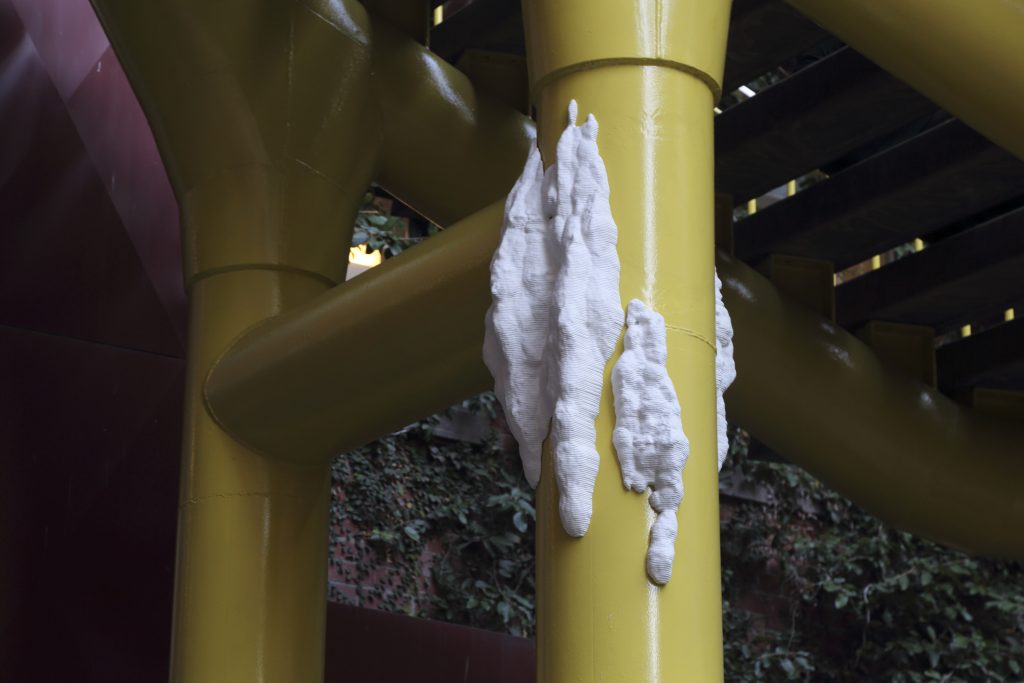
James Geurts lives and works in Melbourne and Netherlands. He completed his Masters of Art at RMIT Melbourne in 2009 and has been producing large- scale, site and time- specific projects and gallery works in international contexts since 2002. Geurts employs an ‘expanded drawing practice’ to draw out the dynamics that form perception.
Geurts amplifies and reframes phenomena that tend to be overlooked because they are either too vast, localized, transient or largely invisible.
He seeks to activate the threshold between the immersive and the investigative. Typically Geurts’ projects focus on features such as tidal zones, horizons, meridians, and other conceptual lines and markers of place.
Recent commissions include: Archeology of Time, Creative Victoria Public Sculpture Fund (2015), Resurveying Site II, Regional Arts Victoria Fund (2015) and Watertable, Public Art Commission St Arnaud (2015).
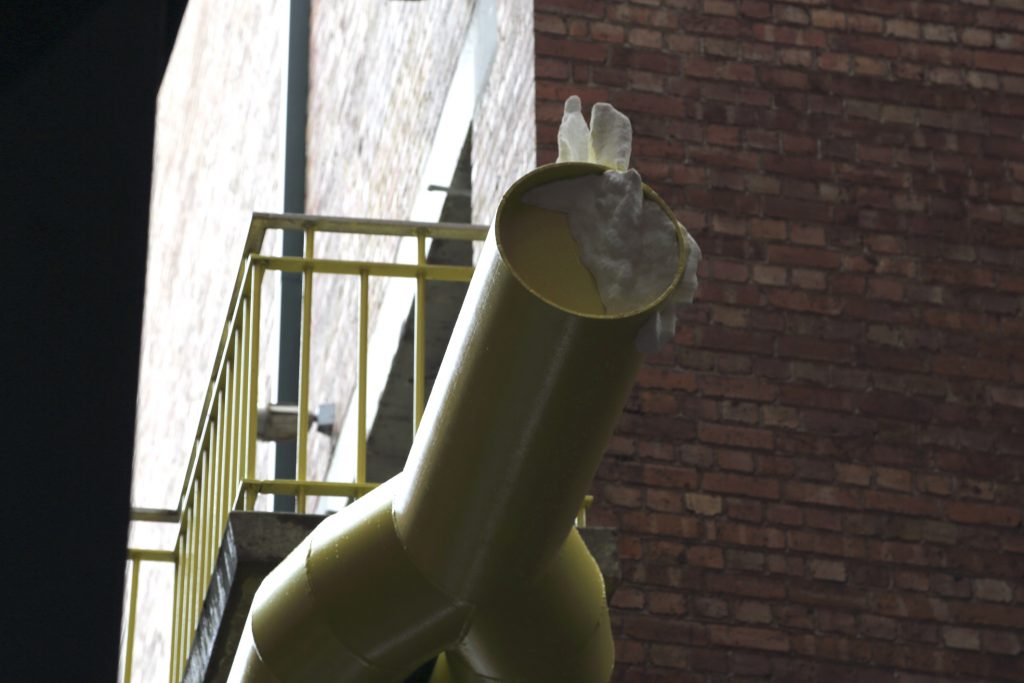
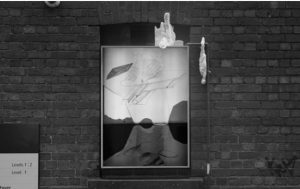
Hear thoughts from artist James Geurts, David Thomas (Professor of Fine Art, RMIT University) and Andy Ball (RMIT Distinguished Professor), all responding to elements of the project.